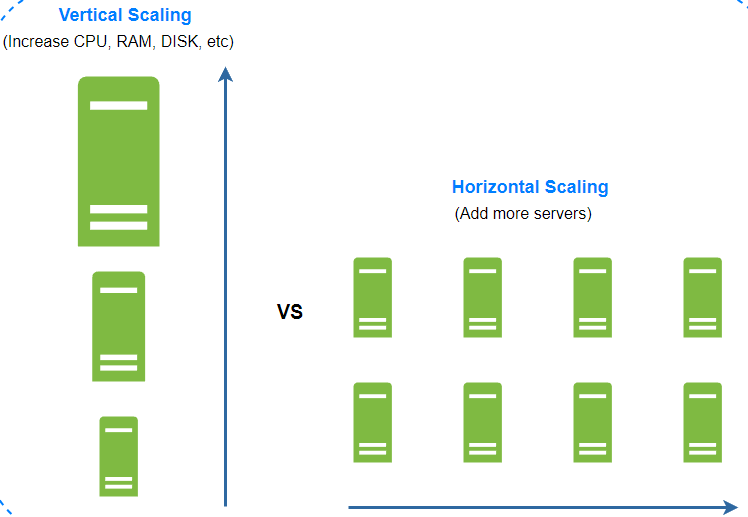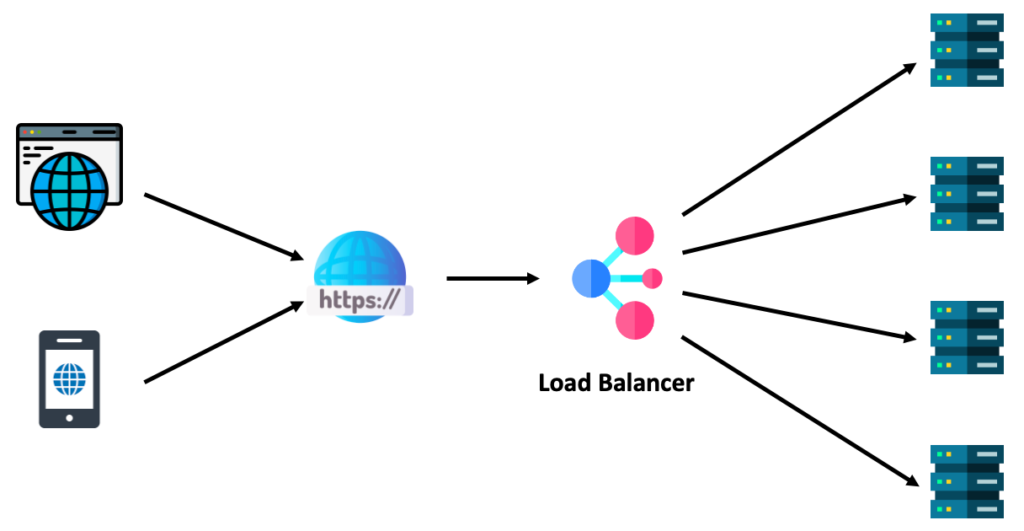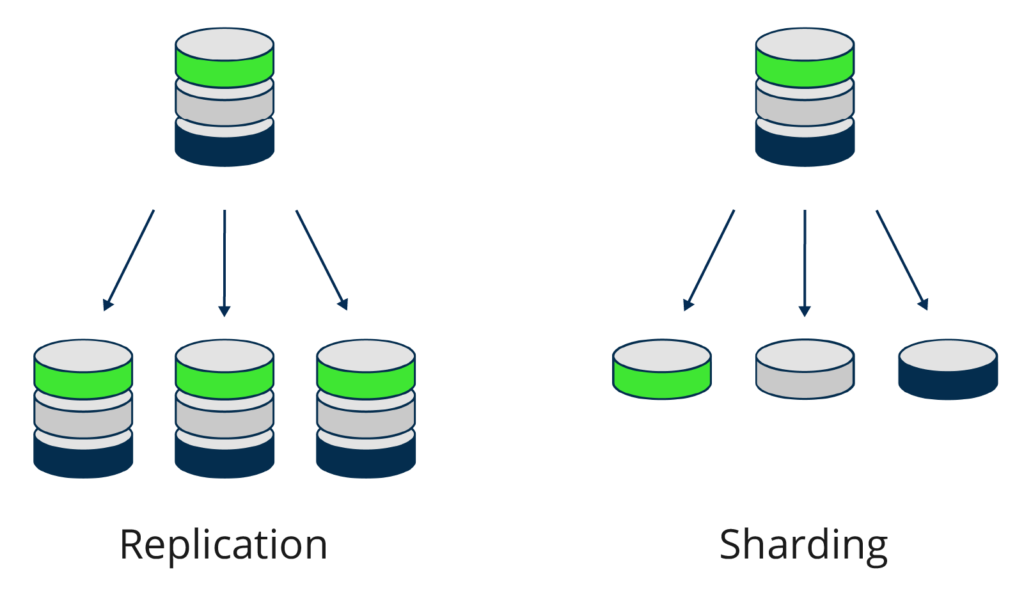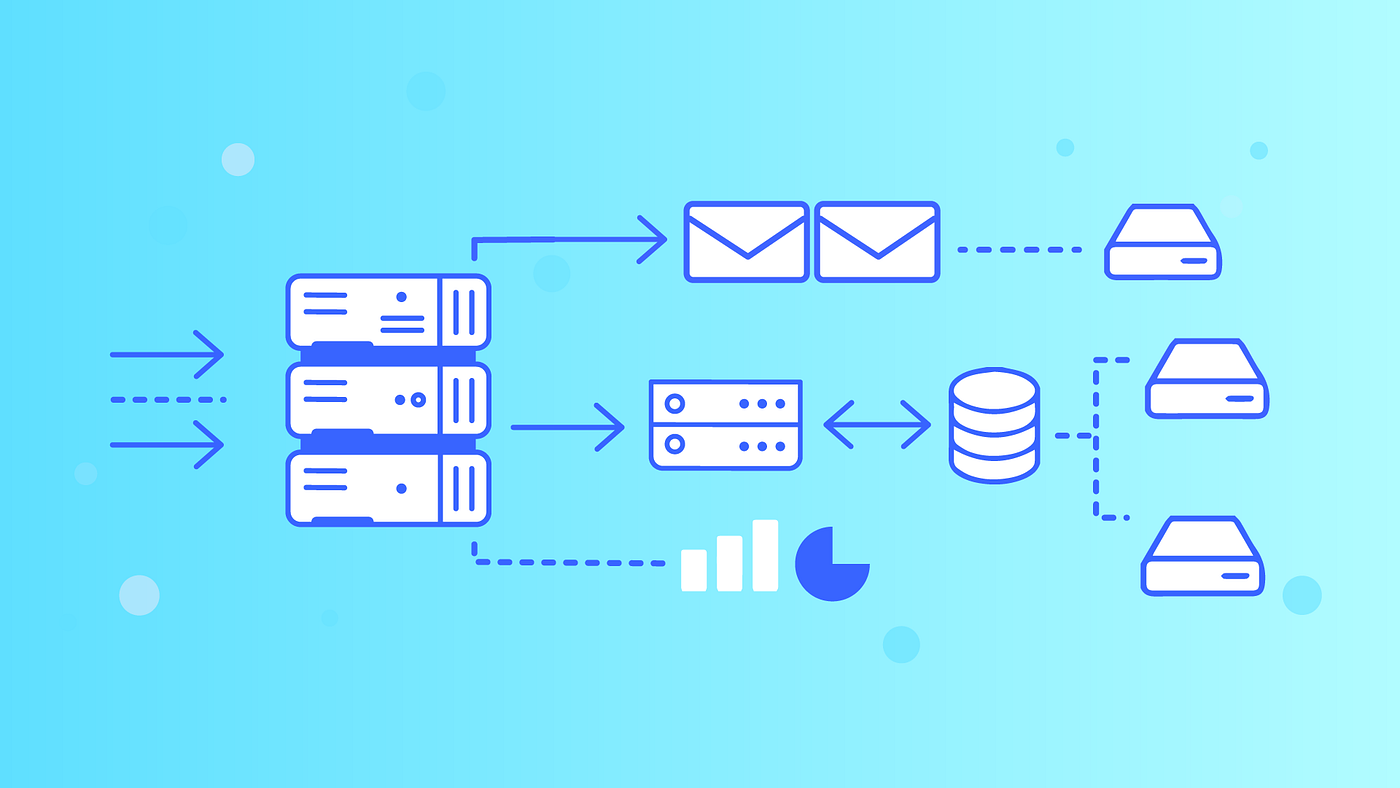In this blog, we’ll walk through the basics of how web systems work, breaking down each part into easily understandable steps with examples to help visualize the concepts better.
Step 1: Client & Server – How the Web Communicates

Imagine you’re texting a friend. You send a message (that’s the client), and your friend receives it and replies (that’s the server). The client (your phone) makes a request to the server (your friend’s phone) to send a message, and the server responds by sending one back. This is how most web interactions work—your device requests something, and the server sends the requested data, like a webpage or video, back to you.
Step 2: Databases – Organizing Data for Easy Access

Think of a database as a giant file cabinet where information is stored neatly. For example, when you sign up for a streaming service, your username, password, and preferences are saved in a database.
There are two main types of databases:
- SQL databases are like an old-school library, where books are sorted on shelves according to a clear system. They work best for structured information, like user details or payment records.
- NoSQL databases are more flexible, like a mixed-media collection of books, maps, and photos. They’re ideal for storing unstructured data, such as social media posts or photos.
Step 3: Scaling – Growing to Handle More Traffic

Let’s say you open a small ice cream shop, and suddenly it becomes super popular. You need to scale your business to meet the growing demand:
Vertical scaling is like getting a bigger ice cream machine so you can serve more people from the same shop.
Horizontal scaling is like opening more ice cream shops across town to serve more customers simultaneously. Websites scale similarly by adding more servers or improving existing ones to handle increasing traffic.
Step 4: Load Balancing – Ensuring All Servers Share the Work

Imagine you’re running several ice cream shops, but one of them is always packed while the others are empty. You’d hire someone to direct customers evenly to all shops. On the web, a load balancer does this by distributing requests across multiple servers, ensuring that no single server gets overwhelmed.
Step 5: Database Sharding & Replication – Spreading Out the Data

If you have multiple libraries in different locations, you might split the book collection across them (sharding), with each library specializing in certain genres. In the same way, large databases can be split into smaller chunks, each handled by different servers.
To keep your data safe, you also make copies of your books and store them in different libraries (replication). This way, if one library is damaged, the information is still available elsewhere.
I will continue with Part 2, covering the remaining concepts.

